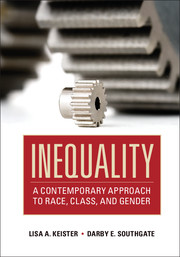Book contents
- Frontmatter
- Contents
- Acknowledgments
- I Basic Concepts
- II Applications
- 5 The Upper Class and the Elite
- 6 The Middle Class and Workers
- 7 The Working Poor and the Underclass
- 8 Social Mobility
- 9 Education and Inequality
- 10 Women and Their Changing Positions
- 11 Race and Ethnicity
- 12 Culture
- 13 Inequality across the Globe
- 14 Public Policy and Social Stratification
- Index
- References
9 - Education and Inequality
from II - Applications
- Frontmatter
- Contents
- Acknowledgments
- I Basic Concepts
- II Applications
- 5 The Upper Class and the Elite
- 6 The Middle Class and Workers
- 7 The Working Poor and the Underclass
- 8 Social Mobility
- 9 Education and Inequality
- 10 Women and Their Changing Positions
- 11 Race and Ethnicity
- 12 Culture
- 13 Inequality across the Globe
- 14 Public Policy and Social Stratification
- Index
- References
Summary
A Sociology of Education
Education is arguably the most important institution in modern society. Although societies always have transmitted knowledge from one generation to another, education today functions as a moderator of stratification and inequality (Buchmann and Hannum 2001; Shavit and Blossfield 1993). As we can imagine, the lives of the 15 percent of students who drop out of school before earning a high school diploma are very different compared to those of the 10 percent who earn a graduate or professional degree (U.S. Census Bureau 2010). As discussed herein, education helps determine what some researchers consider personal characteristics, such as social status (Shavit and Blossfield 1993), occupation (Buchmann and Brakewood 2000; Shavit and Mueller 1997), and family size (Astone and Upchurch 1994). Moreover, these same factors also predict educational achievement (Blake 1989; Bourdieu and Passeron 1977) and the attainment levels of one’s children (Astone and McLanahan 1991; deGraaf 1988; Pong 1997; Powell and Steelman 1993). Education systems can be both formal and informal; however, this chapter focuses primarily on the former.
We may ask, “Why do sociologists study education; isn’t that the job of educationalists?” Yes and no. Whereas educationalists generate knowledge about teaching and learning as well as organization and policy, sociologists focus primarily on the structures and processes of education systems around the world. In general, sociologists look at education and, specifically, schools as institutions (Trent, Braddock, and Henderson 1985) that create social membership (Anderson 1982), workplaces (Dreeben 1973), and organizations (Bell 1980; Bidwell 1974; Campbell 1975). Of particular interest is how education affects a person’s life course considering class, race, and gender.
Information
- Type
- Chapter
- Information
- InequalityA Contemporary Approach to Race, Class, and Gender, pp. 334 - 380Publisher: Cambridge University PressPrint publication year: 2012
